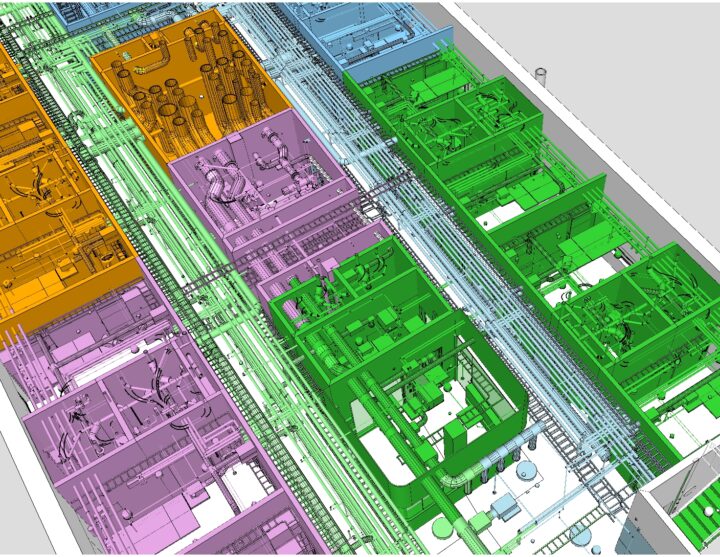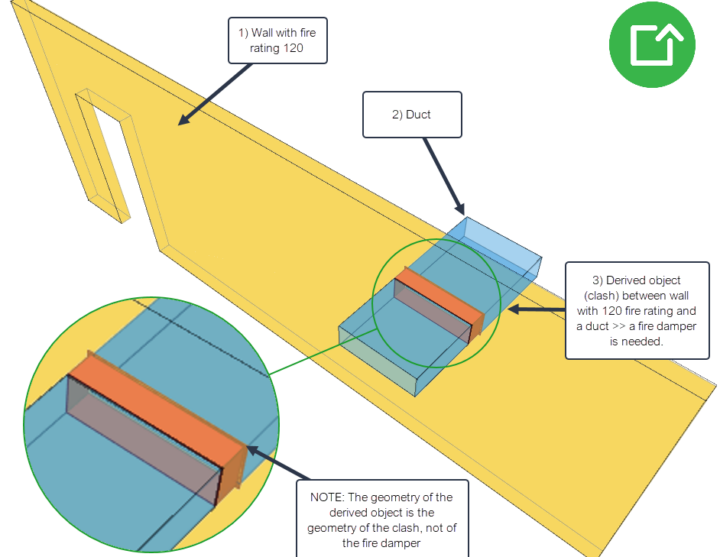Applied BIM Data Science: How to unlock exponential value from BIM data
26.11.2024
In the modern construction industry, data is as essential as the raw materials used in building. Just as we transform any raw material into high-value products, we need to approach data with the same mindset to unlock its full potential. This concept of a scalable and efficient data value chain is at the heart of improving how we handle Building Information Modelling (BIM) data.
But how can we create the same kind of value from BIM data as we do from physical products? Let’s take a deeper look into the process of data refinement, the current tools available, and how Simplebim enables us to extract exponential value from raw BIM data.
The BIM data value chain
Think about any product’s value chain. It always starts from the raw materials, which are processed into finer and finer products, adding value in each step, until they becomes a final product. The final product can be 100 or 1000 times more valuable than the raw materials. The same logic applies to data. In its raw form, data holds limited value, but when processed and refined, it can become highly valuable.
In the BIM world, the raw data is in the models created by designers. The models are created with different software, by different companies and by different design disciplines. So, it is not surprising that the data is not consistent and cannot yet have all the information you need. However, the data is not bad. It is just raw. Just like any raw material, this raw BIM data needs processing to reach its full potential.
The challenge: Turning raw data into valuable insights
Currently, BIM tools allow us to create, store and analyse and communicate BIM, but the solution to process BIM data in an automated and centralised way is missing. Data processing is a crucial part of any data life cycle. Current BIM workflows try to refine BIM data with a manual and distributed way. By humans, separately in different solutions. This process is time-consuming and resource-intensive, often costing more than the value generated from the refined data.
The key is to flip this equation by creating a scalable data value chain. Rather than manually refining data each time, we need to centralise and automate the refinement process, enabling more value to be extracted with fewer resources.
The solution: Applied BIM Data Science
We don’t have to reinvent the whole solution ourselves in BIM market. We can borrow many powerful concepts and workflows from data science. The full data processing automation requires data pipelines, but in this blog let’s concentrate on the meat of the data processing, so called data flows. Data flows allow us to do so called “Data wrangling”. It is a process designed to take mixed, inconsistent BIM data and make it useful.
BIM models have unique features such as geometry and various data structures, which can be difficult to handle with generic tools. By applying specific techniques to BIM models, we can refine raw BIM data into a more valuable product in a scalable and automated way.
The process involves several steps:
- Data discovery – Automatically identifying the relevant data and how we want to use it.
- Structuring – Organising the data into a consistent structure across different disciplines and projects.
- Cleaning – Removing unnecessary or incorrect data and normalising the remaining data, giving the data the same values.
- Enriching – This is the interesting stage, where you can really add value to the model, using consistently structured and refined data you can automatically calculate quantities, define locations, or generate new objects and more.
- Validation – Making sure that the data is reliable.
- Publishing – Finally, you need to decide how to format the data. Do you want for example to export refined data back to IFC or to data tables? Also, this is where you can make sure that the data can automatically be connected to other data sources.
This refined data, now enriched and in consistent structure, can be used for deeper insights, better project management, and more accurate analysis.
Bridging the gap between BIM and other data sources
The construction industry generates more data than just BIM models. There’s for example financial data, procurement data, safety records, and project costs, all play crucial roles in a project’s success. Yet, design and BIM data often remains isolated from these other data sources, limiting its potential.
By connecting BIM data to this larger “data fabric” we can unlock even greater value. When BIM data is fully integrated with other enterprise data sources, it becomes possible to see the complete picture of a project, from design through construction, to make smarter, more informed decisions. In practice, this connection can only be done efficiently enough with the help of automated data processing.
A scalable future for BIM
The future of BIM lies in refining data at scale. Pipelines, data flow and the process of data wrangling allows us to extract exponentially more value from raw BIM data, making it not only more efficient but also more valuable. Companies that adopt automated, centralised processes for data refinement see significant improvements in the quality of their projects, reduced costs, and faster project timelines.
At Simplebim, we’ve been developed technology for refining and automating BIM data for over 15 years. Our tools are already helping companies like Bylor, NCC, and SRV achieve better outcomes by automating BIM data refinement processes. And now, we’re bringing these capabilities to a broader market, offering scalable, automated solutions that unlock the full potential of BIM data.
As the construction industry continues to evolve, the key to success will be treating data as a valuable product—refined and enriched at scale to deliver more value with less effort. By adopting this mindset, we can finally realise the full potential of BIM and drive real change across the industry.
Read our case studies to find out how Simplebim is being used to add value to raw BIM data in some of the largest construction projects across the globe.
Or why not see how you can use it yourself by taking our 15-day free trial.


